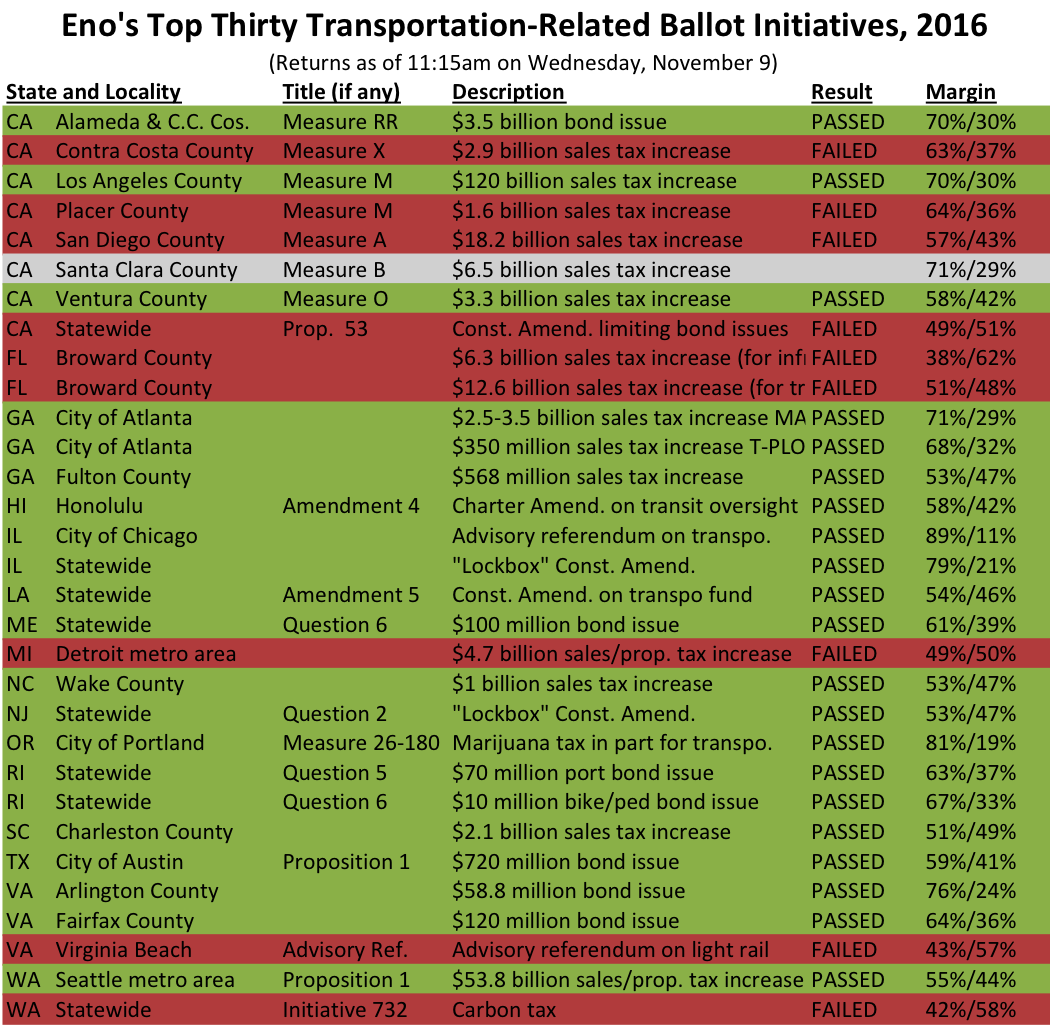November 9, 2016
Beyond the contest between Hillary Clinton and Donald Trump, voters made enduring decisions on nearly transportation 400 ballot measures in their states, counties, and cities yesterday.
They included funding measures for freeway tunnels in Los Angeles, a light rail system in Virginia Beach, and improving bike/pedestrian infrastructure in Rhode Island. Others were policy changes like the “lockbox” constitutional amendments that mandate all transportation-related taxes or fees be directed back to transportation-related purposes, as in Illinois and New Jersey.
Eno selected its top 30 transportation ballot initiatives and tracked their progress throughout Election Night. From these, 20 measures passed that increased sales taxes (typically by half a cent), issued bonds, and – perhaps the most creative – levied a 3% marijuana sales tax that contributes to street infrastructure, among other things.
As yesterday revealed, it is impossible to prepare for every variable. A ballot measure – regardless of the quality of the idea, sunk costs, or the dire need for the project – relies highly on voter education, turnout, organized opposition, financial concerns, jurisdictional disputes, and countless other issues.
This was the case for Detroit yesterday, where voters rejected an ambitious $4.6 billion project to build a rail and bus network. Many commentators thought this would be the one; the region had organized state support, established cooperative structures between four counties, and developed a master plan to execute upon passage.
Instead, it was the 27th time that Detroit failed to build a robust public transit system. Local voters and experts claim it was due to the high cost of the project and concerns that the public transit infrastructure would soon be obsolete. After falling short by less than one percent, the measure’s failure means that 92% of jobs in the region will continue to be unreachable without spending an hour or more on public transit.
A table showing the disposition of each measure is below, and full descriptions of each of the 30 measures can be read here.





